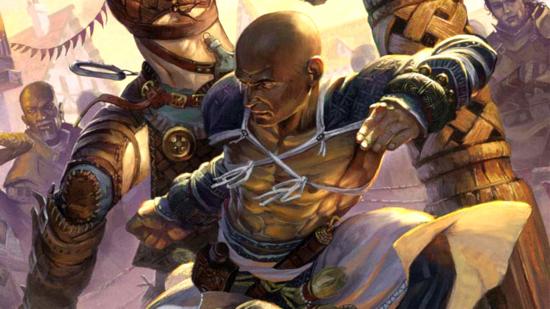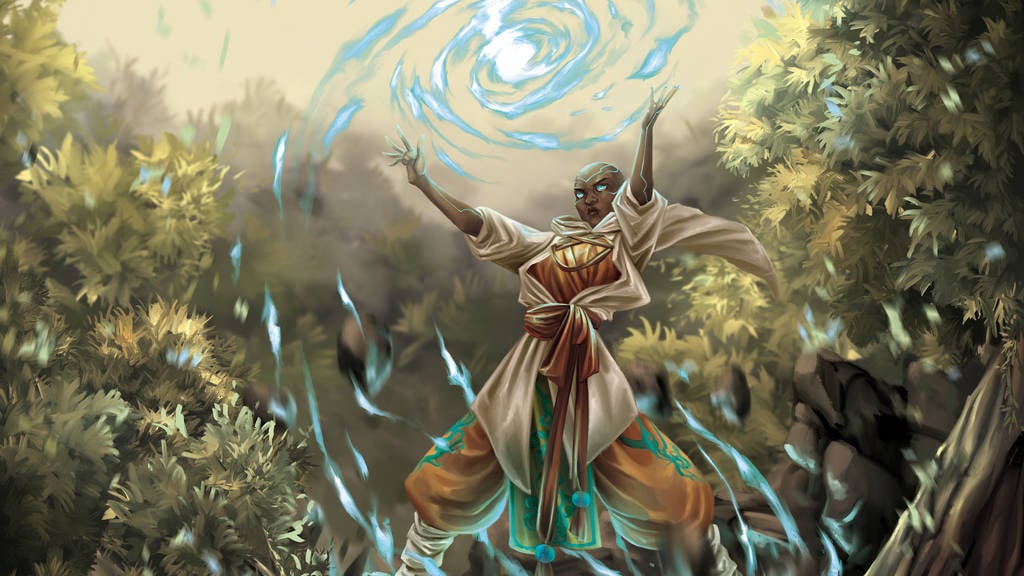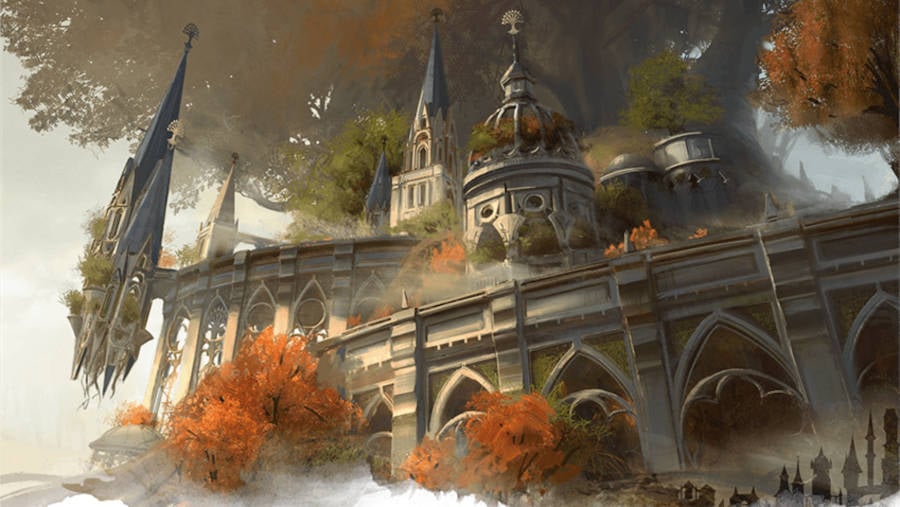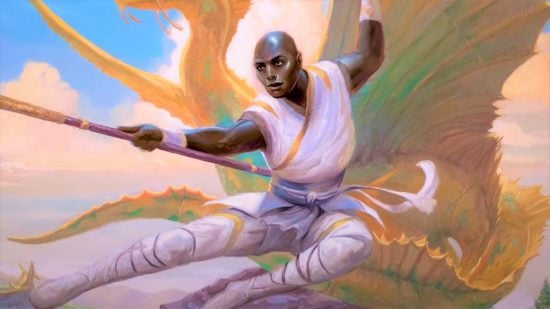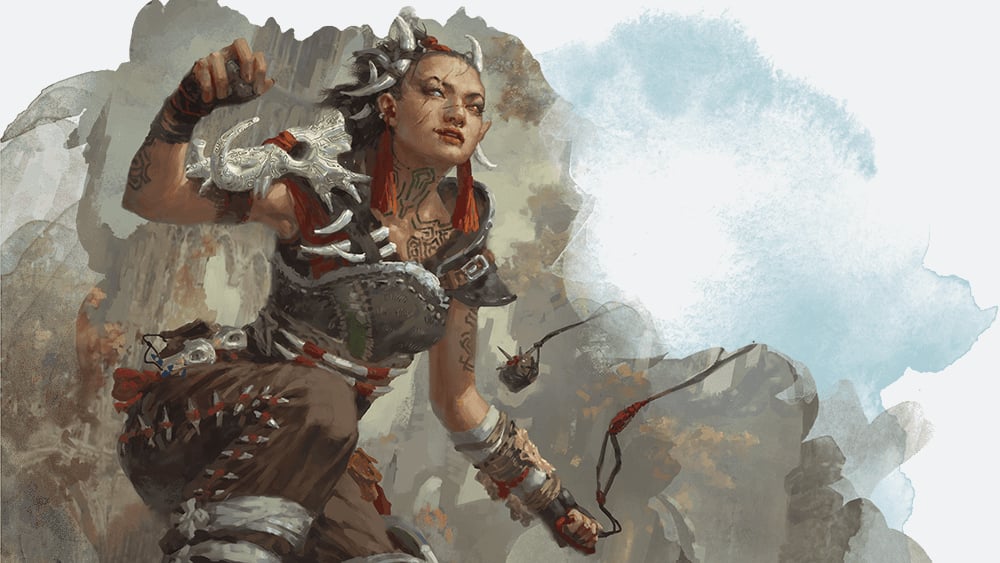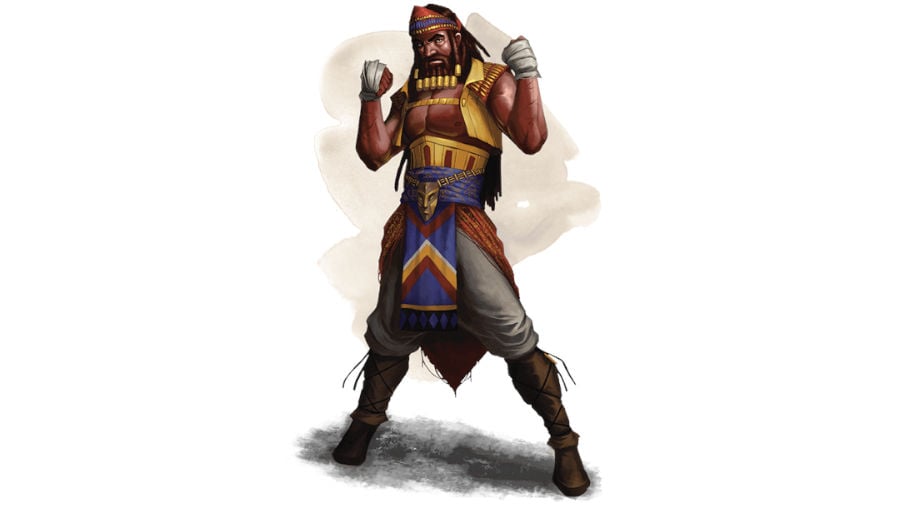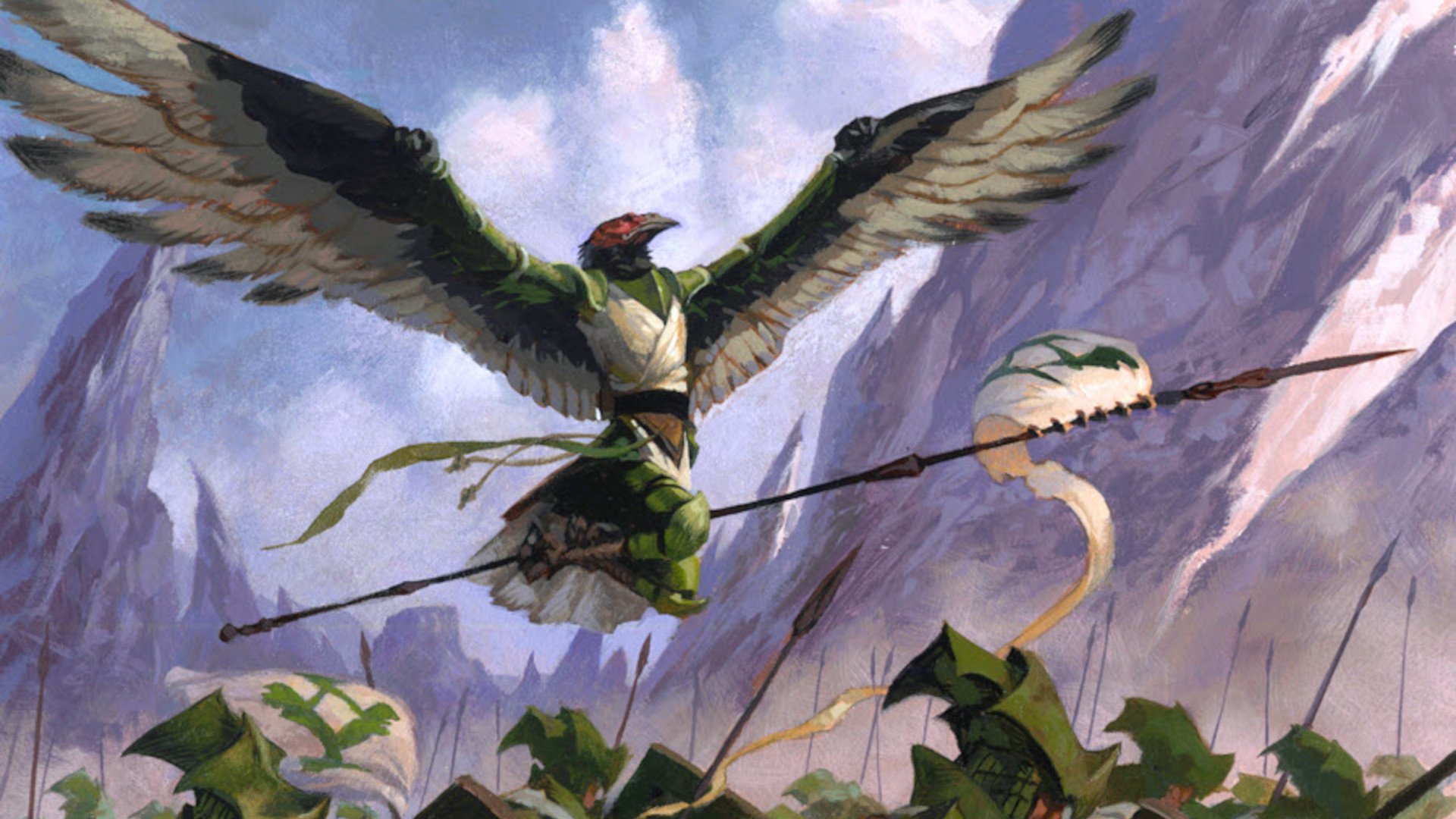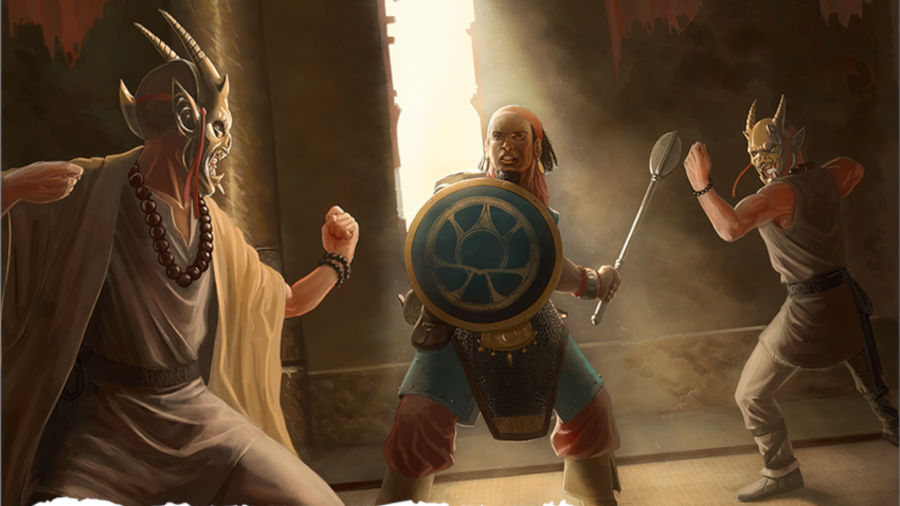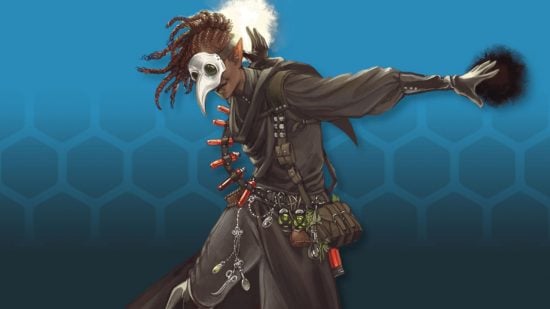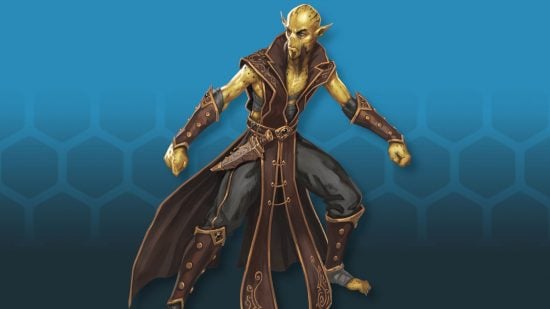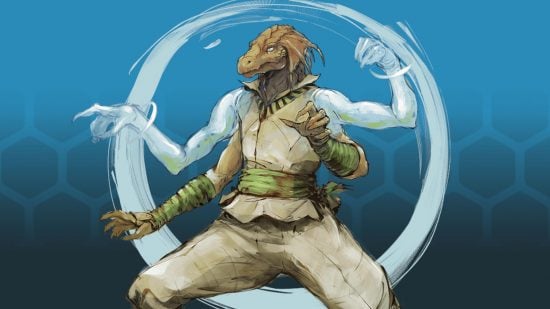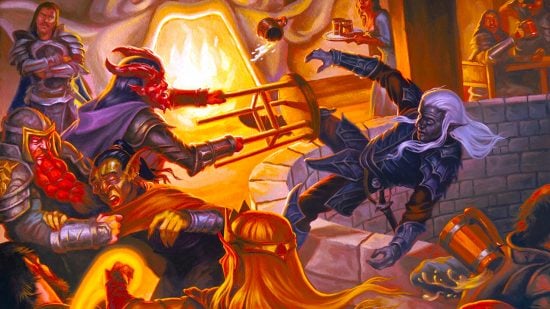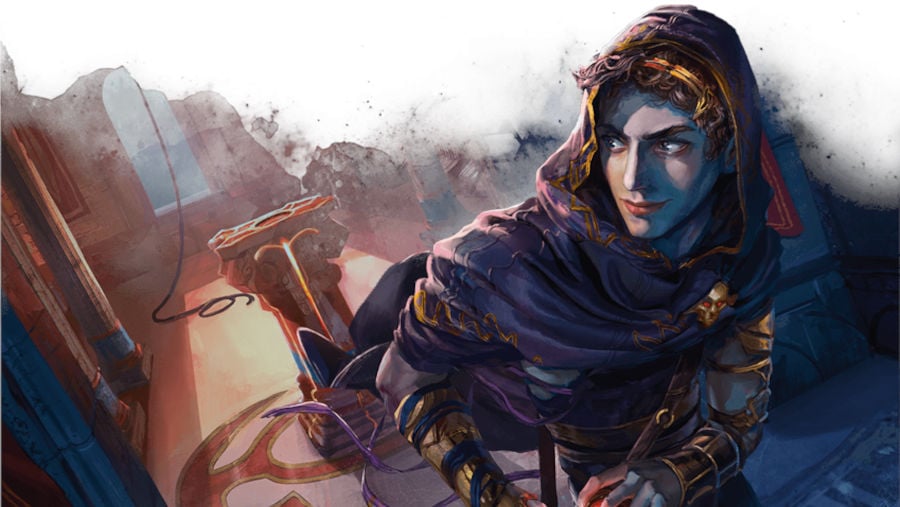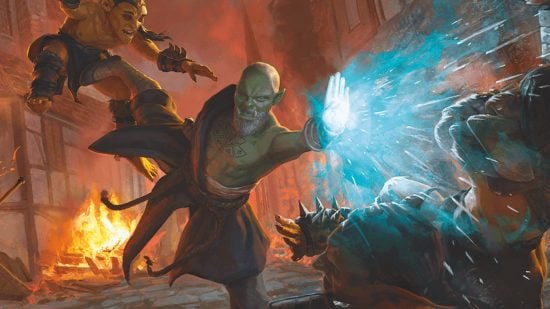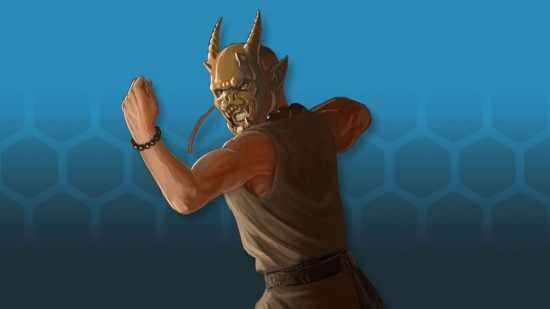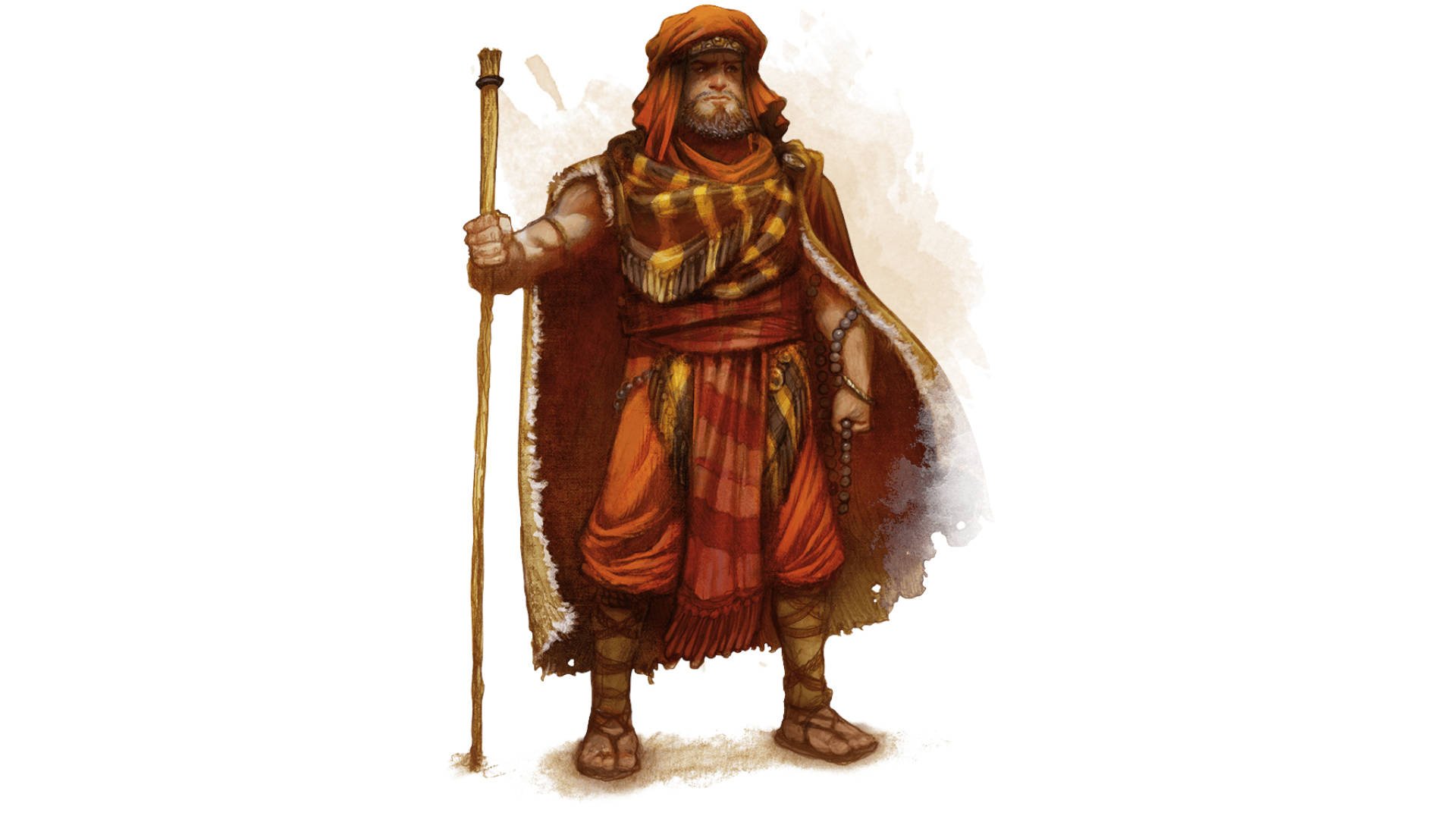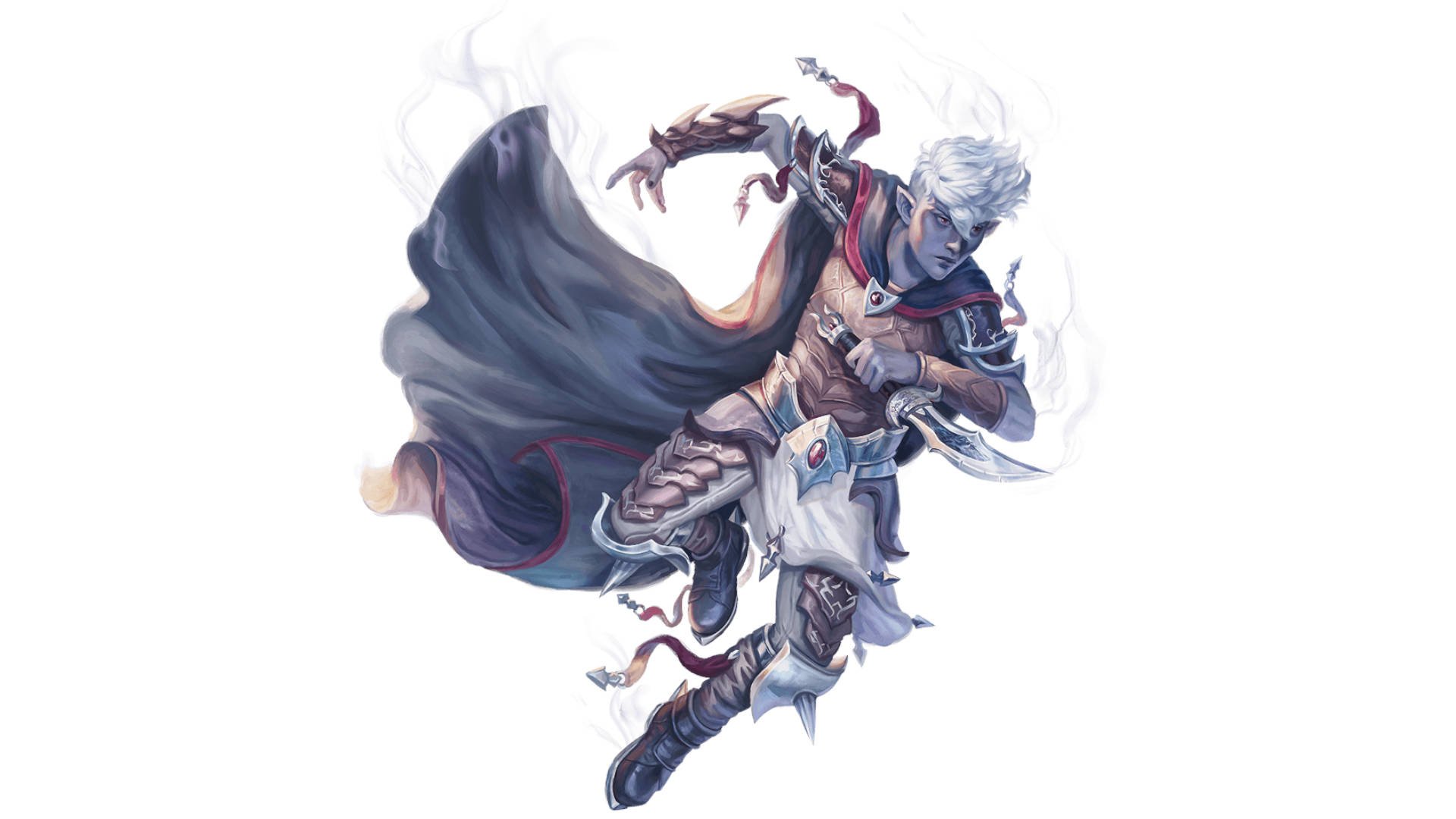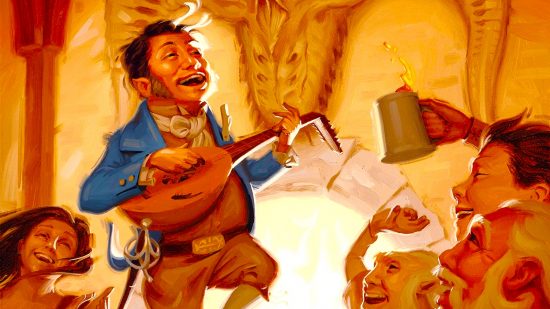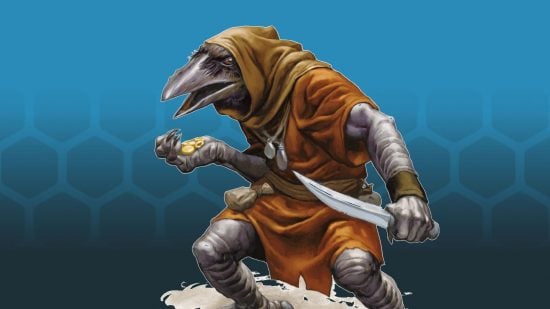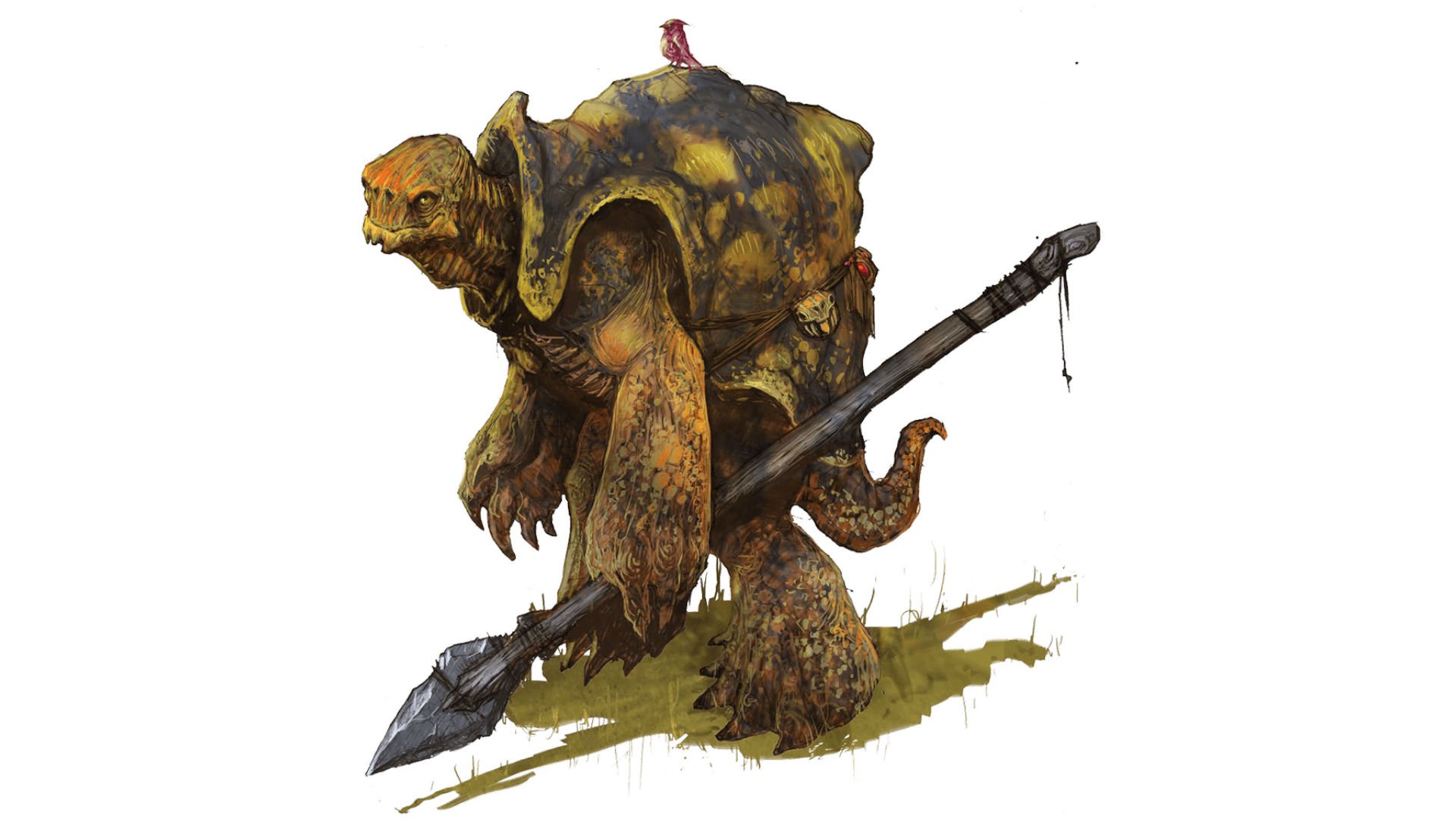Through rigorous discipline and physical training, the DnD Monk 5e class masters martial arts, gaining control over their bodies well beyond the capabilities of ordinary mortals. By meditating on the mysteries of their monastic order, they harness the spiritual energy known as ki, and they can channel this life force to empower themselves and perform superheroic feats. If this energy calls to you, it’s time to roll your first Monk 5e character – and we can guide you through the process.
When playing the DnD 5e Monk class, your character is primarily a flexible, fragile, frontline fighter. When you choose a Monastic Tradition for your Monk at level three, you can double-down on that archetype, or pick up a secondary skillset as a healer, infiltrator, or combat spellcaster.
If you’re totally undecided about which class to take into the dungeon on your next adventure, our DnD classes guide will help you out. After that, we can also help you pick DnD races and DnD backgrounds for your perfect DnD character build.
Here’s all you need to know about the DnD Monk 5e class:
- Monk 5e stats
- Monk 5e class features
- Best race for Monk 5e
- Monk subclasses 5e
- DnD Monk builds
- One DnD Monk
Monk 5e stats
Despite the huge variety of cloistered religious orders in the real world, the D&D Monk is modeled on Far Eastern history, mythology, and pop culture.
There’s no option to follow the ‘Way of the Hop’ and play as a Trappist Monk with proficiency in brewing. You will find Monastic Traditions that are inspired by the popular perceptions of Ninjas, Wuxia literature, Avatar the Last Airbender, Dragonball Z, and even the Drunken Fist fighting style popularized in the West by Jackie Chan’s 1978 film Drunken Master.
Here are the core Monk 5e stats for your character:
| Hit dice | 1d8 per level |
| HP at lvl up | 1d8 (or 5) + Constitution modifier |
| Primary ability scores | Dexterity and Wisdom |
| Armor proficiency | None |
| Weapon proficiency | Simple weapons, shortswords |
| Tool proficiency | One type of artisan’s tools or one musical instrument |
| Saving throws | Strength, Dexterity |
Monks strive for perfection in two domains: the body and the spirit. Accordingly, Dexterity and Wisdom are their most important DnD stats.
Monks can use their Dexterity modifier in place of Strength when rolling to hit or damage with an Unarmed Strike, and many of their class abilities can only be used when they make an attack without wielding DnD weapons. Fortunately, they’ll gain increasingly powerful Unarmed Strikes as they gain a DnD level up.
Monks must be unarmored to use many of their class features. Dexterity is a big help here, and their Unarmored Defense ability allows them to add their Wisdom modifier to their Armor Class provided they go into combat without armor or a DnD shield. When enemies are permitted a saving throw against a spell cast by a Monk’s ki, the DC is based on the Monk’s Wisdom modifier.
Monk 5e class features
There are a multitude of small Monk 5e class features that are thematically connected but mechanically quite distinct.
Martial Arts – Wuxia Masters
Monks are skilled masters of martial arts. At first level, Monks can use Dexterity in place of Strength when making Unarmed Strikes or attacking with the Monk weapons associated with their order. These Martial Arts attacks deal d4 damage (or the damage dice of your chosen weapon), an amount that increases as you level up.
After attacking with Unarmed Strike or one of their order’s weapons, Monks can use their bonus action to make another unarmed strike (although this behaves a lot like an instance of two-weapon fighting, it doesn’t interact with 5e feats like Dual Wielder or the Two-Weapon Fighting style). Monks also go into combat unarmored, adding their Wisdom to their Armor Class, provided they bring neither DnD armor nor shield.
Whatever daring, physics-defying acrobatics you’ve seen in Wuxia movies, there’s a good chance that Monks can perform them. At second level, Monks become faster when they’re unarmored. At level three, Monks can use their reaction to deflect missile attacks, potentially snatching the arrow out of the air and flinging it back at their foe.
At fourth level, Monks can slow themselves when falling, reducing any damage they might suffer. At level five, they gain an extra attack each turn.
At level seven, their quick reflexes allow them to completely avoid any damage when they pass a Dexterity check to dodge a DnD fireball or dragon’s lightning breath. And when they hit level nine, they can run across water.
Ki – Inner harmony
A Monk’s devotion to physical perfection is a gateway to inner harmony. Monks harness the spiritual energy known as ki, using it to empower their abilities.
Some of these are empowered by spending ki points. At low levels, a Monk might spend one ki point to make two additional Unarmed Strike attacks using Flurry of Blows, or use Step of the Wind to disengage as a bonus action. At level 18, Empty Body lets a Monk spend 4 ki points to become invisible for one minute and gain resistance to all but force damage, or 8 ki points to cast the Astral Projection spell and enter a higher plane through meditation.
Each of the Monastic Traditions a Monk can follow provides them with different ways to use their ki. Ki points refresh every time a Monk is able to spend some portion of a Long Rest 5e in meditation.
As the Monk levels up, they gain passive abilities that represent their increasingly perfect inner being. Purity of Body makes them immune to disease and poison, while Tongue of the Sun and Moon allows the Monk to communicate with all creatures in any language.
Diamond Soul grants the Monk advantage to all saving throws, and Timeless Body makes them immune to ageing. Should a Monk reach level 20, Perfect Self allows a Monk to regain four ki points if they have none when they roll for initiative.
Best race for Monk 5e
Monks benefit from high Dexterity and Wisdom, so any races that can provide a boon to these scores will make a good starting point. While primarily lightly-armored damage dealers or skirmishers, Monks can have many other secondary roles, so races with innate spells could help you focus on a particular build.
Bear in mind that a lot is changing in the world of D&D right now. Tasha’s Cauldron of Everything has divorced a character’s race from their innate abilities, so 5e rules like Custom Origins mean any race could conceivably make a strong Monk.
What’s more, we’re seeing new playtest material for One D&D every day. Pretty soon there might be a whole new Monk build to recommend. For now, though, here are our top picks for your Monk’s race.
Aarakocra
The Aarakocra’s flying speed of 50 feet can only be used when they are not wearing medium or heavy armor, which is no hardship at all for a Monk. Flight and a natural affinity for Gust of Wind makes an Aarakocra Monk particularly agile. With a DnD Aarakocra, you can create a Monk similar to the Tengu of Japanese mythology.
Elf
With +2 Dexterity, all the elvish subraces are suitable Monks. The Pallid DnD Elf and Wood Elf subraces both have +1 Wisdom, giving them the best stats for the job.
The Pallid Elf has advantage on Intelligence (Investigation) and Wisdom (Insight) checks, excellent for a wise sage. They can cast the DnD cantrip Light and the spells Sleep (from third level) and Invisibility 5e (on themselves only, from fifth) once per Long Rest.
The Wood Elf meanwhile is slightly faster and, using Mask of the Wild, can hide in the lightest of woodland cover. If you’re playing in Eberron it’s worth taking an Aereni Wood Elf, as they substitute the normal Elvish weapon training (which a Monk can’t take advantage of) for a double proficiency bonus in a single skill or tool.
Halfling
Another race that has +2 Dexterity across its subraces, all Halfling 5e characters have the makings of a great Monk. The Nimbleness race ability allows Halflings to move through the space of creatures larger than themselves, something that Monks can take advantage of by spending ki to activate the Step of the Wind ability and disengage as a bonus action, sneaking right through the enemy battleline.
The Lotusden Halfling gains some DnD Druid spells they can use every Long Rest, while the Mark of Healing Halfling can cast Cure Wounds and Lesser Restoration. Both gain +1 Wisdom, making them good picks for a Monk that leans more into a secondary role as a healer or support character.
Tortle
The Tortle 5e race has a thick shell that provides them with Natural Armor and an AC of 17, which is unmodified by Dexterity. This allows you to build a Monk with Dexterity as a dump stat, using Strength to buff up your Unarmed Strikes instead. This allows you to play against the stereotype and build a Monk that is sturdy and strong, rather than nimble yet fragile.
Wildhunt Shifter
This shapeshifter can adopt a bestial form as a bonus action, gaining a sprinkling of temporary hit points, advantage on Wisdom checks, and near total immunity from being attacked with advantage for one minute. They also gain proficiency in Survival, Intimidation, Athletics, or Acrobatics. The Wildhunt Shifter doubles down on the fluid fighting style of the Monk, as well as gaining useful outdoors and tracking skills that will serve you well in a campaign with lots of wilderness exploration.
Monk subclasses 5e
At third level, each Monk devotes themselves to a Monastic Tradition. This is the spiritual path they will follow on their road to enlightenment. They gain new ways to channel their ki, shaping their inner energy to achieve supernatural effects.
Way of Mercy 5e
Found in: Tasha’s Cauldron of Everything
| Level | Subclass abilities |
| 3 | Implements of Mercy (proficiency in Insight, Medicine, and a herbalism kit), Hand of Healing, Hand of Harm |
| 6 | Physician’s Touch |
| 11 | Flurry of Healing and Harm |
| 17 | Hand of Ultimate Mercy |
The hands of a Monk who follows the Way of Mercy 5e can affect the life force of others, healing them with positive ki or bringing a swift end to their suffering by channeling negative ki. Or to put it differently – this Monk can punch you back to health.
Their features are all based around Unarmed Strikes. They can spend ki to heal a creature a number of hit points equal to their martial arts die + Wisdom modifier, or can swap one of their bonus attacks from Flurry of Blows for healing. Alternatively, they can channel negative ki into their strikes and deal the same amount in necrotic damage after landing an Unarmed Strike, once per turn.
As they level up these abilities increase in power, creating a master of life and death who, by level 17, can use the Hand of Ultimate Mercy to resurrect the dead.
Way of the Four Elements 5e
Found in: Player’s Handbook
| Level | Subclass abilities |
| 3 | Discipline of the Elements (Elemental Attunement and one other) |
| 6 | Additional Elemental Discipline |
| 11 | Additional Elemental Discipline |
| 17 | Additional Elemental Discipline |
Fans of Avatar: The Last Airbender and Legend of Korra, look no further, your element-manipulating Monk is right here. Monks who follow the Way of the Four Elements 5e have a buffet of different Elemental Disciplines to choose from, starting with Elemental Attunement and another of your choice at level three. You’ll gain another each time you progress their Monastic Tradition. These abilities are activated by using ki points.
Some of the Disciplines have unique powers: Shape the Flowing River allows the Monk to reshape water and ice to their will, while Fangs of the Fire Snake sheathes the Monk’s fists in flames to deal fire instead of bludgeon damage, and offers the ability to add extra fire damage to a strike by spending more ki.
Other Disciplines mimic 5e spells, and the Monk can cast these at higher levels by imbuing further ki into them. Fist of Four Thunders allows the Monk to scatter enemies around them by casting Thunderwave, while Eternal Mountain Defense casts Stoneskin on the Monk.
Monks following the Way of the Four Elements are combat casters with a very restricted spell list but an extremely thematic set of powers. Though you’re not limited to a single element, if you focus on just one you would do well to choose the Elemental Master feat, preventing enemies from using Resistance against your attacks.
Way of the Astral Self 5e
Found in: Tasha’s Cauldron of Everything
| Level | Subclass abilities |
| 3 | Arms of the Astral Self |
| 6 | Visage of the Astral Self |
| 11 | Body of the Astral Self |
| 17 | Awakened Astral Self |
Monks following the Way of the Astral Self 5e believe that their true self exists on the astral plane. Their meditation and discipline allow them to summon elements of that being onto the physical plane to aid them in their adventuring.
The different aspects of the Astral Self provide different benefits, and the Monk can summon more and more of them as they level up. The first, Arms of the Astral Self, provides the Monk with a ten-foot reach when making Unarmed Strikes (no grappling with your long spirit arms, unfortunately.)
The Astral Arms allow the Monk to deal force damage with their Unarmed Strikes, but more significantly, allow them to use their Wisdom modifier in place of their Strength or Dexterity when making Unarmed Strikes or Strength-based ability checks and saves. This opens the path for you to create a Monk that’s all mind and no matter, with a pumped Wisdom stat and a (relatively) low Dexterity.
The Visage of the Astral Self provides several utility bonuses, such as the ability to see in normal and magical Darkness to 120 feet, or direct speech to only a single creature that they can see within 60 feet. The Body of the Astral Self joins the Visage and Arms, enhancing the damage that the Arms deal and allowing the Monk to reduce incoming elemental damage as a reaction. The Awakened Astral Self remains manifested for longer than any of the components, provides +2 AC, and grants an extra attack in a barrage of spiritual fists.
Follow the Way of the Astral Self if you want to play a wise master who wears their own soul like a mech suit.
Way of the Drunken Master 5e
Found in: Xanathar’s Guide to Everything
| Level | Subclass abilities |
| 3 | Drunken Technique, proficiency in performance and brewer’s supplies |
| 6 | Tipsy Sway |
| 11 | Drunkard’s Luck |
| 17 | Intoxicated Frenzy |
The Way of the Drunken Master 5e is modeled on real Chinese martial schools that teach a form of unpredictable, arhythmic fighting which mimics the movements of a drunk to disorientate their foe. The Drunken Master is a more fluid combatant than even other Monks.
Drunken Technique grants them +10 feet of movement and the ability to disengage whenever they use their Flurry of Blows ability, combining offence and defense. Tipsy Sway allows the Monk to leap to their feet for only five feet of movement rather than half of their move, ensuring that they’re quickly righted whenever they’re knocked down.
The Drunken Master wants to be in the middle of a brawl. The other ability provided by Tipsy Sway is Redirect Attack, letting them use a reaction whenever an enemy misses them to swing the incoming blow into another creature within five feet of them. Their final ability, Intoxicated Frenzy, grants them up to five additional attacks whenever they use Flurry of Blows, provided they target separate enemies.
The Drunken Master is also a proficient performer; their drunkenness (real or feigned) a lure to misdirect their enemies. They’re a great choice if you love the slapstick comedy of some of the best Jackie Chan movies (including Drunken Master, of course), or if you want to play a happy-go-lucky fool with a secret core of iron.
Way of Shadow 5e
Found in: Player’s Handbook
| Level | Subclass abilities |
| 3 | Shadow Arts |
| 6 | Shadow Step |
| 11 | Cloak of Shadows |
| 17 | Opportunist |
Do you like Ninjas? Of course you like Ninjas! Monks who follow the Way of Shadow 5e gain skill in the deadly Shadow Arts, a set of spell-like effects into which they can channel ki to grant magical Darkness, Darkvision, Pass Without Trace, or Silence. From level six, Shadow Step allows them to teleport from shadow to shadow as a bonus action, granting them advantage on one attack roll.
By level 11, the Cloak of Shadows allows them to turn invisible as an action while they are in darkness. Their final ability, Opportunist, allows them to react with an attack action whenever an enemy is hit by an attack, emphasizing their dishonorable, but undeniably effective, fighting style.
A Way of Shadow Monk’s best abilities don’t rely on ki, so you won’t feel short-changed if you never get their level 20 ability – a great reason to start DnD multiclassing into at least one level of Rogue 5e.
If they’re caught flat-footed in daylight, most of this Monk’s powers are stripped away. But if you’re a proactive player who likes to create your own opportunities and attack on your own terms, this is a great character that can disassemble an unprepared enemy and escape unseen.
Way of the Kensei 5e
Found in: Xanathar’s Guide to Everything
| Level | Subclass abilities |
| 3 | Path of the Kensei, two Kensei weapons |
| 6 | One with the Blade, an additional Kensei weapon |
| 11 | Sharpen the Blade, an additional Kensei weapon |
| 17 | Unerring Accuracy, an additional Kensei weapon |
Sword saints and students of the noble blade, Monks following the Way of the Kensei 5e are masters of certain armaments. They train with dedication until they master a pair of weapons, which can be any simple or martial weapon that lacks the Heavy or Special properties, or a Longbow. They treat them as Monk weapons, gaining proficiency and the ability to channel their ki into the blades. As they follow this Monastic Tradition, they will master additional weapons.
Initially, Path of the Kensei allows the Monk to make an Agile Parry, turning their Kensei weapon into a shield on any turn in which they use their Attack action for an Unarmed Strike. Or they can unleash a Kensei’s Shot, using a bonus action to add 1d4 damage to a ranged weapon attack.
From level six, their ki begins to empower their blades. Kensei weapons are treated as magical for the purpose of enemy resistances, and they can spend ki to use a Deft Strike once per turn, adding an extra Martial Arts die in damage to the attack.
At level 11, they can channel one to three ki points of ki into a non-magical Kensei weapon, adding an attack and damage bonus for one minute, as if they were wielding a +1 to +3 weapon. From level 17, they can reroll one missed attack made with a Monk weapon per turn.
Unarmored but heavily armed, the Way of the Kensei Monk is one of the few ways to build a Monk that fights at range, or a melee fighter that can efficiently and predictably spend ki to add more damage. If your DM has a bad habit of running combat encounters in open areas with no cover, try an Aarakocra Way of the Kensei Monk specializing in the longbow to teach them the importance of terrain in encounter design.
Way of the Open Hand 5e
Found in: Player’s Handbook
| Level | Subclass abilities |
| 3 | Open Hand Technique |
| 6 | Wholeness of Body |
| 11 | Tranquility |
| 17 | Quivering Palm |
The ultimate Martial Arts Master. If you love Bruce Lee, Crouching Tiger Hidden Dragon or even Kill Bill Part 2, the Way of the Open Hand 5e is for you. This Monastic Tradition doubles down on the Wuxia powers that all Monks gain, becoming the Monk-est of all Monks.
Whenever they hit an enemy using an attack from Flurry of Blows, the Monk can inflict an additional effect on their foe: force it to make a Dexterity save or be knocked prone, force it to make a Strength save or be knocked 15 feet away, or prevent it from taking reactions during its next turn.
Any power that can knock an enemy off a cliff, throw them from a boat, or push them into lava is automatically brilliant. This Monk remains a frontline fighter but can control the flow of battle, creating safe lanes for allies to advance through, or clustering enemies for area-of-effect attacks.
Wholeness of Body allows the Monk to regain hit points equal to three times their Monk level once per Long Rest, as an action. This doesn’t provide as much healing over an adventuring day as the Fighter’s Second Wind, but it provides a whole lot of it all at once.
In a similarly peaceful manner, Tranquility places the Monk under the Sanctuary spell after finishing a long rest, forcing any creature that attacks them to make a Wisdom saving throw. Build yourself a Legacy of Phlegethos DnD Tiefling that follows the Way of the Open Hand and you can combine Sanctuary with Charm magic, letting you wander into an enemy stronghold like Luke Skywalker strolled into Jabba’s Palace.
The final technique of the Way of the Open Hand is the secret Quivering Palm strike. This can be used after successfully making an Unarmed Strike on a foe and spending three ki points.
The strike sets up lethal, imperceptible vibrations in the foe’s body that the Monk can bring to a fatal conclusion by spending an action (provided they are on the same plane of existence). When the Monk does so, the enemy must pass a Constitution save or be reduced to zero hit points; on a pass, they suffer 10d10 damage.
Even on a save, that’s an incredible amount of damage for three ki points. Bear in mind, though, that this damage doesn’t land until the Monk’s next turn at the earliest, and the damage can be avoided if the foe uses Plane Shift or Gate to travel to another dimension. But really, what could be cooler than killing a dragon using the Five Point Palm Exploding Heart technique?
Way of the Long Death 5e
Found in: Sword Coast Adventurer’s Guide
| Level | Subclass abilities |
| 3 | Touch of Death |
| 6 | Hour of Reaping |
| 11 | Mastery of Death |
| 17 | Touch of the Long Death |
Sinister, quasi-necromantic Monks, those following the Way of the Long Death 5e are fascinated by the point at which the soul and body separate. Rather than making them into killing machines, most of their abilities allow them to evade death’s cold grasp.
Touch of Death allows them to gain temporary hit points equal to their Wisdom modifier + Monk level whenever they reduce an enemy within five feet to zero HP, slurping up its life essence (remember, temporary hit points from multiple sources don’t stack, so pace yourself when it comes to drinking souls).
Hour of Reaping allows the Monk to spend an action to attempt to terrify every enemy within 30 feet, forcing them to make a Wisdom save or suffer the Frightened effect for a turn. If they use this they will be sacrificing all their attacks for the turn, but they acquire it at just level six, when they may still be facing powerful foes with poor Wisdom saves (natural beasts, Hill Giants and Slaad are great targets).
Mastery of Death will have the DnD Barbarian gnashing their teeth in envy and the Cleric 5e kissing you: for a single ki point and no action, if the Monk would be knocked to zero HP, they instead remain standing on one HP.
Although most of this Monk’s abilities are about avoiding death, not ushering it in, Touch of the Long Death is the exception. Spend one to ten ki points, touch an adjacent creature, and force them to make a Constitution save. If they fail they take 2d10 necrotic damage for every ki point spent; on a pass they suffer half as much.
This is the perfect way to assassinate that high-level rival who has every magical ward going: Antimagic Sphere won’t protect them from being flash-aged into dust by the Touch of the Long Death.
Way of the Sun Soul 5e
Found in: Xanathar’s Guide to Everything
| Level | Subclass abilities |
| 3 | Radiant Sun Bolt |
| 6 | Searing Ace Strike |
| 11 | Searing Sunburst |
| 17 | Sun Shield |
The Way of the Sun Soul 5e teaches Monks to unleash the power of their soul in bursts of radiant energy. Martial arts and energy beams? This is one for fans of Dragon Ball Z.
The Radiant Sun Bolt allows the Monk to make ranged spell attacks. Even better, you’ll be able to use your Dexterity modifier as a bonus to its attack and damage rolls for greater punch. Using the Monk’s Martial Arts dice for damage, its power increases as you level up, and the radiant damage it inflicts should be useful for knocking down particularly undivine foes. When a Monk unleashes a sun bolt, they opt to spend 1 ki to unleash two more as a bonus action.
Searing Arc Strike allows the Monk to channel ki into casting Burning Hands as a bonus action after attacking. You can also channel additional ki to cast it at a higher level, though you can only spend an amount of ki equal to half your Monk level.
Searing Sunburst is a Hadouken or Kamehameha attack (or perhaps even a Spirit Bomb). A 120-foot range spell that creates a blast of light with a 20-foot radius, creatures caught in the blast must pass a Constitution save or suffer 2d6 radiant damage, an amount that can be boosted by spending up to three ki points for 2d6 damage each. Though less potent than Fireball, resistance to radiant damage is extremely rare, and if you catch the party Fighter in the blast they have a good chance of passing their save to avoid damage.
When the Monk reaches level 17 they go Super Saiyan. Wreathed in an aura of light, whenever an enemy hits them with a melee attack the Monk can use their reaction to inflict five plus their Wisdom modifier radiant damage to the foe.
DnD Monk builds
Though they all stem from similar Wuxia archetypes, Monk characters can be customized for many different adventuring roles.
Mark of Finding Human Ninja
This Monk combines the Mark of Finding Variant Human’s innate spellcasting ability with the Way of Shadow Monk’s unparalleled infiltration, creating a character that can stealthily creep into any enemy fortress, find exactly what they’re looking for, and escape without causing a whiff of detection.
Details
The Mark of Finding Variant Human has +2 Wisdom and +1 Constitution, meaning you’ll start with a slightly lower than optimal Dexterity score. Target a Wisdom of 16 and Dexterity of 15.
In recompense you’ll gain Darkvision, add an extra 1d4 to Wisdom (Perception) and Wisdom (Survival checks), and get access to the excellent Hunter’s Mark spell once per long rest. Hunter’s Mark grants +1d6 damage when you make a weapon attack against a marked target, lasting for an hour.
To take advantage of Hunter’s Mark, you’ll need to fight with Monk weapons, so pick up a shortsword, a dagger, and some darts. These will grow more powerful as your Martial Arts die increases.
Select proficiency in Stealth and Athletics (for climbing through windows and sneaking), and the Charlatan or Urchin background to grant you proficiency in Sleight of Hand – there’s nothing worse than a perfect infiltration thwarted by a locked bedroom door.
At level three, The Way of Shadow grants the Minor Illusion 5e cantrip and access to Darkness, Darkvision, Pass Without Trace, and Silence spells for two ki. As you already have Darkvision, you never need to worry about that aspect, but Pass Without Trace and Silence can be amazing tools for effortless infiltrations and undetected murders.
Your Mark of Finding also grants you the Locate Object spell once per short rest, a perfect tool to speed up the infiltration of an enemy fortress.
Instead of taking your fourth level in Monk, take a single level as a Rogue to gain basic Sneak Attack damage and Expertise. Expertise doubles the proficiency bonus you gain for two skills: Stealth is an obvious pick, and doubling your proficiency bonus in Athletics will compensate for a low Strength score.
For your fourth Monk level, the Athlete feat is a great way to emphasize your Ninja skills. It provides +1 Dexterity (pushing you up to 16 Dexterity and +3 damage), allows you to stand from prone for only 5 feet of movement, allows you to climb without spending additional movement, and allows you to make a running jump after only moving 5 feet.
Your sixth level as a Monk will provide you Shadow Step, letting you teleport from Shadow to Shadow, and granting you advantage on your next attack roll during the turn that you do so. When you join combat you will mark an enemy and zip between the shadows, always beyond arm’s reach, throwing sneak attack darts into your foe until they succumb. If forced into the light your excellent maneuverability will allow you to leap and scramble your way back into the cover of darkness.
Halfling Drunk(en Master)
Halflings have a reputation for living the good life, so who would suspect a Halfling drunk of being a secret master of the martial arts? This build combines the Drunken Master’s fluid combat style with the Halfling’s tiny stature to create a drunken terror that is adept at avoiding blows as they are at starting fights.
Details
Pick a Ghostwise Halfling, gaining +2 Dexterity, +1 Wisdom, some luck, and the ability to move through the space of larger creatures. The Ghostwise Halfling can communicate telepathically with a creature that shares a language up to 30 feet away; perfect for starting fights in taverns. Take proficiency in Acrobatics and Insight, and a background that provides you proficiency in Deception, such as a Gambler, Criminal or Spy.
From level two, you can use your bonus action and a ki point to disengage. As a Halfling, you can slip between the legs of enemies, allowing you to move anywhere in the battleline, setting up the party Rogue for a sneak attack, engaging an enemy caster, or just getting out of the way of a nasty foe.
When you begin to follow the Way of the Drunken Master, you will be able to disengage for free anytime you use Flurry of Blows. Now you don’t have to choose between offence and freedom of movement – punch your way around the battlefield in a masterful display of sprawling limbs and drunken lunges.
To truly emphasize your buttery-smooth maneuverability, take the Squat Nimbleness feat at level five. This grants +1 Strength or Dexterity, +5 feet movement speed, proficiency in Athletics or Acrobatics (you’ll want Athletics), and advantage on attempts to escape from being grappled, ensuring you’re never at the mercy of others.
From level six, rather than maneuvering out of trouble, you will aim to dive into the heart of it. The ability to redirect enemy melee attacks that miss you onto other enemies within five feet means that you will have the most impact on combat when you’re right in the heart of the action.
Kenku Windbender
A generational curse afflicts the crow-like Kenku 5e, stripping them of the wings their ancestors once bore. Many Kenku strive to achieve flight. By following the Way of the Four Elements, and focusing on elemental powers attuned to air, our bird Monk will take to the sky once more.
Details
The Kenku can choose proficiency in two skills as well as their ideal ability score increases. The proficiencies you take aren’t going to have a huge impact on your Kenku’s flying prowess, but picking something like Acrobatics will help keep you nimble. In general, focus on boosting Dexterity and Wisdom.
At level three, specialize in the Way of the Four Elements. Our Kenku is really only going to focus on one of them, Wind, because their dream is to take to the skies. They will begin with the Elemental Attunement discipline, and you can choose Rush of the Gale Spirits (which allows you to cast Gust of Wind) to start off your air-themed path of mastery.
At level six, Clench of the North Wind will allow you to cast Hold Person 5e (sadly, this is a concentration spell, so you can’t use it to set someone up to be blown off a cliff by Gust of Wind).
At level 11, Ride the Wind will grant your Kenku the ability to fly. Rejoice! You can now retire from adventuring. Or hold on until 17th level, pick up Breath of the North Wind (which allows you to cast Cone of Cold), and enjoy your new life as a miniature White Dragon.
Tortle Grappling Kensei Master
Despite their physical perfection, Monks aren’t very good grapplers. Tending to prioritize Dexterity over Strength, they usually have a weak Athletics score, even if they become proficient in it. The armored Tortle doesn’t rely on Dexterity to defend itself, so can instead focus on weight-lifting.
Details
The Tortle has a natural AC of 17. The legacy version of the Tortle boosts your Strength and Wisdom – stick with these for grappling purposes. Make sure that you pick Athletics as a skill proficiency, as this is what Grappling is based on.
At level three, follow the Way of Kensei and specialize in the Longsword or Warhammer, which you’ll wield one-handed. Agile Parry allows you to use the weapon purely for defence, giving you +2 AC.
At level four, pick the Tavern Brawler feat. This grants you +1 Strength or Constitution, and when you make an unarmed strike attack, you can take a bonus action to grapple your opponent. The game plan is to fight defensively to start, benefiting from Agile Parry until you can successfully grapple a foe. Then once you have them in your iron-strong grip, wail on them with your weapon.
At level eight, select the Grappler feat. This grants you advantage on attack rolls against foes you are grappling, a great way to ensure you land hits and are able to channel your ki into more damage using Deft Strike, as well as giving you better value from Sharpen the Blade when you get it at level 11.

One DnD Monk
Like all Dungeons and Dragons classes, the Monk might be seeing a lot of changes in the upcoming One DnD Player’s Handbook. While these updates won’t be final until we see them printed in a DnD book, it’s still worth knowing what we’re in for when the DnD release schedule drops a new Monk in 2024.
One of the biggest changes comes from Wizards’ aim of addressing Monk stereotypes. Ki has been renamed ‘Discipline‘, for example.
The video above goes into detail about the latest iteration of the One DnD Monk. The short version of this Monk playtest update is that the class seems to be getting a much-needed power boost. This includes beefier Martial Arts dice, more flexibility when using Unarmed Strike as a bonus action, and more general usefulness when a Monk runs out of Discipline points.
The Monk has pinched a few features from the DnD Rogue to become even more agile than before. According to Wizards, future Monks will be able to deflect melee attacks and spell attacks as well as ranged, and it’s easier than ever before to regain Discipline points. All this seems to lead to a more versatile, powerful Monk.
Ready to move on from the Monk? Maybe you’re ready to learn how to be a DM. Here you’ll find the best tips for running your favorite DnD campaigns.
